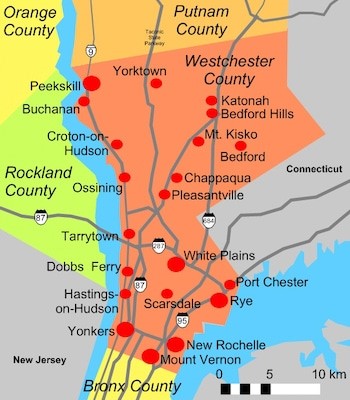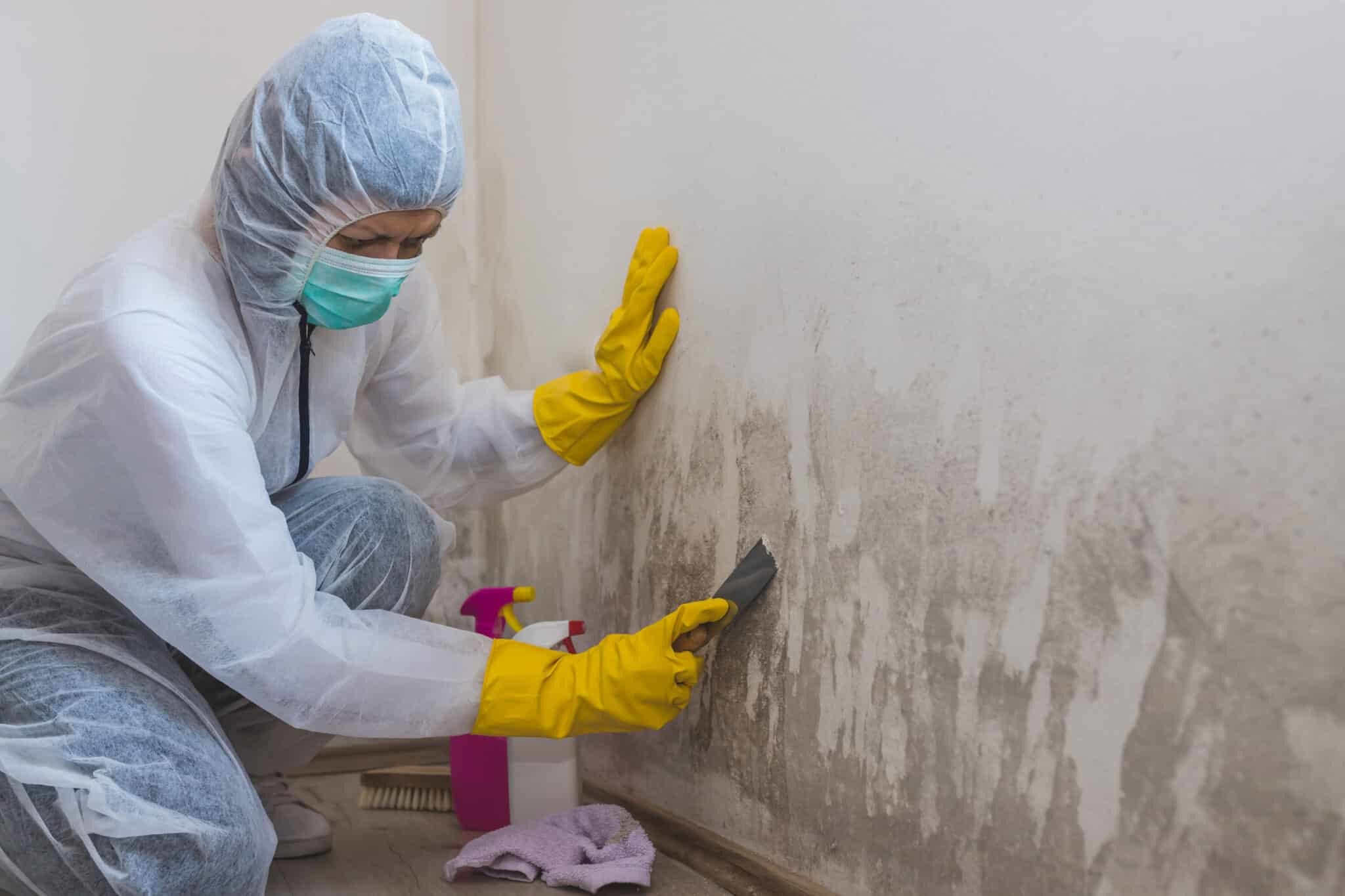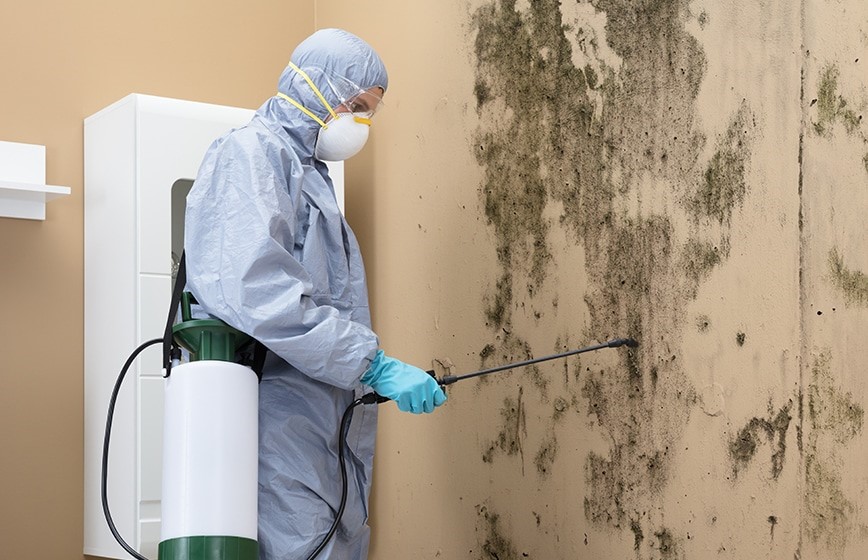Mold Removal Westchester – Mold Remediation Westchester
Westchester County sits just north of New York City with thriving urban areas such as Yonkers, Mount Vernon and New Rochelle, as well as pastoral leafy areas with quaint villages and horse farms in most of the central and northern regions. Due to the heavily forested areas, lakes, ponds, and regions that are adjacent to the Hudson River and Long Island Sound, moisture is highly prevalent in the air and in the ground. The same holds true for the neighboring counties of Putnam, Rockland and Fairfield, CT. Moisture is the primary cause of mold, which can cause severe health problems such as asthma, emphysema, flulike symptoms, headaches, memory loss and cancer.
After an assessment is performed by a licensed mold assessor, and a problem has been positively determined and a protocol for remediation has been drafted, we should be contacted to provide you with a qualified mold remediation expert to clean the mold.
Mold remediation is the process of removing and cleaning mold from an indoor environment to prevent health risks and structural damage. Here’s an overview of the steps involved:
Westchester County sits just north of New York City with thriving urban areas such as Yonkers, Mount Vernon and New Rochelle, as well as pastoral leafy areas with quaint villages and horse farms in most of the central and northern regions. Due to the heavily forested areas, lakes, ponds, and regions that are adjacent to the Hudson River and Long Island Sound, moisture is highly prevalent in the air and in the ground. The same holds true for the neighboring counties of Putnam, Rockland and Fairfield, CT. Moisture is the primary cause of mold, which can cause severe health problems such as asthma, emphysema, flulike symptoms, headaches, memory loss and cancer.
All work should be in accordance with the NYS Mold Law and NYC and EPA guidelines as found at www.nyc.gov/html/doh/html/epi/moldrpt1.shtml, and www.epa.gov/mold, respectively. The work should be performed by a qualified licensed abatement company such as the one we employ, or industrial hygienist. Until the abatement is performed, try to avoid going into the affected areas. It could be dangerous to breathe and you could possibly cross-contaminate other places with spores brought in on your clothing. Do not touch mold or moldy items with bare hands, get into eyes or breathe in the spores. Do not attempt to clean with bleach.
Key Steps in Mold Removal Westchester :

1. Assessment and Inspection
Identify the Source: A licensed mold assessor should determine where the moisture is coming from, as mold thrives in damp environments. Common sources include leaks, floods, and high humidity as well as poorly ventilated roofs. Basements and attics are the most frequently found areas of mold infestation. Leaks from HVAC condensate pumps and damaged plumbing pipes are also often the cause of water problems.
Extent of Contamination: Determine the size and scope of the mold infestation.
2. Containment
Isolate the Area: Seal off the affected area with plastic sheeting and use negative air pressure to prevent mold spores from spreading to other parts of the building.
3. Air Filtration
HEPA Filters: Use air scrubbers and HEPA vacuum cleaners to remove mold spores from the air. Scrubbers clean the air in filters and also allow clean fresh air to recirculate.
4. Removal of Contaminated Materials
Dispose of Mold-Infested Items: Items like drywall, insulation, and carpeting that have been heavily infested with mold should be removed and discarded. All foam-containing items such as couches, chairs, mattresses, pillows and stuffed animals must be disposed of.
Clean and Disinfect: Surfaces and contents that can be salvaged are cleaned with appropriate cleaning agents and disinfectants.
5. Cleaning and Sanitizing
Scrubbing and Washing: Use specialized cleaning solutions to scrub away mold from non-porous surfaces.
Anti-Microbial Treatments: Apply treatments such as encapsulating paint to help prevent future mold growth.


6. Drying
Dehumidifiers and Fans: Thoroughly dry the area to ensure no moisture remains, as mold can quickly return if the environment remains damp.
7. Repair and Restoration
Replace Removed Materials: Once the mold has been completely removed, replace any materials that were taken out during the remediation process.
Repaint and Restore: Final steps might include repainting, re-carpeting, or restoring any parts of the structure that were affected.
8. Post-Remediation Verification
Final Inspection: A clearance test should be performed by a licensed mold assessor to ensure that the mold has been fully removed and that moisture levels are under control.
Safety Precautions:
Protective Gear: Remediation contractors should wear appropriate protective clothing, including gloves, goggles, and respirators, to avoid exposure to mold spores. The work area should be cordoned off with plastic to create a containment area.
Addressing the underlying moisture problem is crucial in preventing mold from returning. This may include basement waterproofing, land regrading, dehumidification, roof and flashing repairs or replacement, improved roof ventilation, HVAC duct cleaning, proper fan installation and use, etc.
To have your mold problem remediated properly, contact Certified Inspections, Inc. at www.certifiedinspections.com
Trusted Clients:











Real Customers. Really Great Reviews.


Great Advice!
“I had an unknown plumbing issue in my office that was going on for quite some time and caused some water damage on my flooring. Once I realized what was happening, I panicked thinking my office was covered in mold! I had no experience with these issues, and immediately found Certified Inspections on google and gave them a call. Mark was AMAZING! He is so knowledgable and gave me great advice right away! He even answered my questions about my insurance and what could possibly be covered with my policy! So thankful!”
Jenna V. | Rockland County, NY

Saved Us Thousands!
“When we were selling our house, the buyer’s home inspector told us we had a bad mold problem in the attic, but he never did any testing. We called Certified Inspections and they took several samples and found that the black stuff on the wood wasn’t even mold. They saved us thousands of dollars in cleaning costs and the deal went through. Thank you to Mark and Certified Inspections!!”
Daniel & Ellie R. | Greenwich, CT

Mark is Amazing!
“Mark answers the calls and is so easy to reach. He was so informative, it was amazing. After having 2 mold tests done with different companies, we contacted Certified Inspections for an objective third party opinion Mark stayed on the phone with us for more than 30 minutes thoroughly going over everything and explaining what we should be concerned about. Thank you so much for being so helpful and kind during this time, and resolving our problem once and for all!”
Jeff L. | Westchester County, NY

Highly Recommend!
“When we thought we had mold because our kids were getting sick all the time, we called Certified Inspections. Mark inspected our house from top to bottom and took a lot of time to explain everything to us in detail, including the fact that testing is required before remediation can be done, so that there is no conflict of interest, and so unnecessary work wouldn’t get done, or get done the wrong way. I greatly admire his kindness, honesty, and integrity. After he finished, we were confident we would never have another mold problem again. I highly recommend working with this company if you want the job done right by someone you can trust.”
Ted K. | Manhattan, NY

Huge Help!
“I was worried that my recent health issues were caused by mold so I called the folks at Certified Inspections who were recommended to me by my friend. They spent a long time on the phone with me asking me about my symptoms and various things about my house and workplace, and concluded that mold could not be a cause of my illness. They directed me to the proper specialist who diagnosed and treated me. I feel much better now and Certified never even charged me for the invaluable consultation!”
Karen S. | Chappaqua, NY
